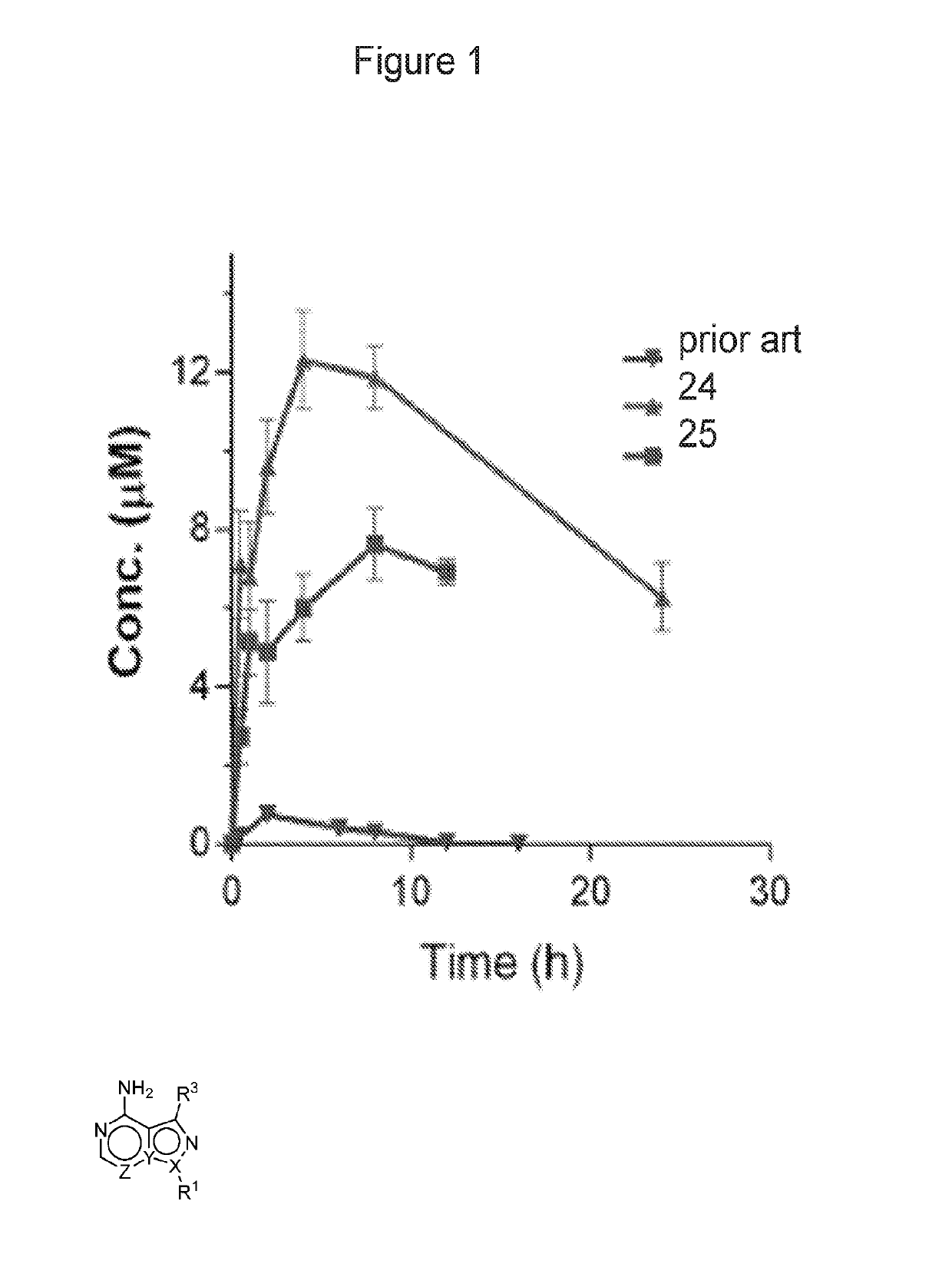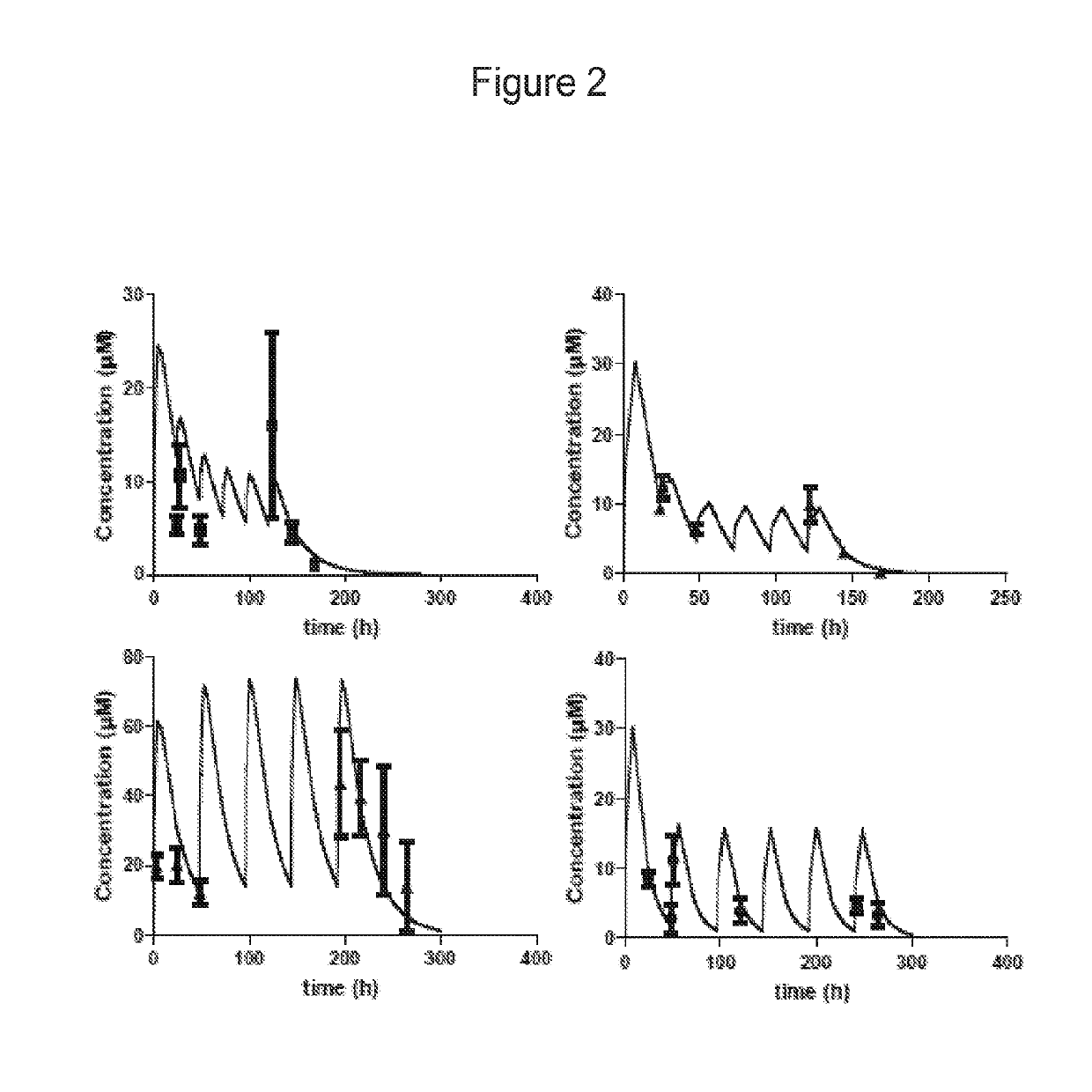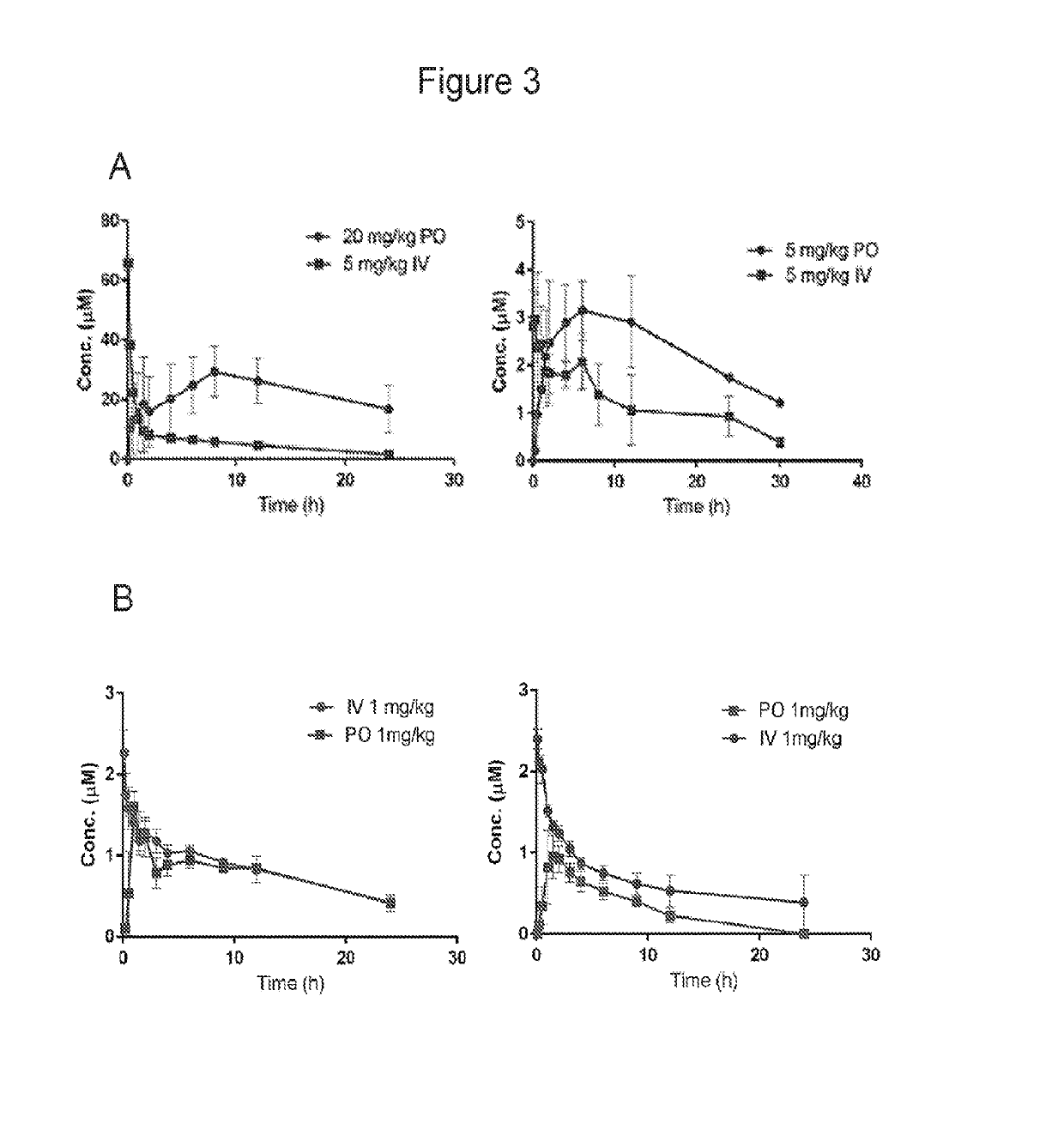Compositions and methods for treating toxoplasmosis, cryptosporidiosis and other apicomplexan protozoan related diseases
a technology of apicomplexan protozoa and compositions, applied in the field of compositions and methods for treating apicomplexan protozoa related diseases, can solve the problems of high cost of cryptosporidiosis therapy, diarrhea that can be life-threatening in immunocompromised patients, and ineffective immunocompromised host treatmen
- Summary
- Abstract
- Description
- Claims
- Application Information
AI Technical Summary
Benefits of technology
Problems solved by technology
Method used
Image
Examples
example 1
obutoxynaphthalen-2-yl)-1-((1-methylpiperidin-4-yl)methyl)-1H-pyrazolo[3,4-d]pyrimidin-4-amine
[0269]
[0270]2-Bromo-6-cyclobutoxynaphthalene: 6-bromonaphthalene (700 mg, 3.1 mmol), K2CO3 (2.140 g, 15.5 mmol), and bromocyclobutane (1.75 mL, 18.6 mmol) in dry DMF were heated at 180° C. in a microwave for 8 h. After completion, ethyl acetate and water were added and the organic phase was separated. The aqueous phase was extracted with ethyl acetate (2×10 mL). The combined organic phases were washed with brine, dried over Na2SO4 and evaporated under reduced pressure. The crude product was then purified via flash chromatography over silica, eluting with a hexanes / EtOAc solvent gradient to afford 693 mg (80% yield) of pure product. 1H NMR (300 MHz, CDCl3) δ 7.88 (s, 1H), 7.65-7.43 (m, 3H), 7.10 (dd, 1H), 6.94 (s, 1H), 4.74 (m, 1H), 2.58-2.45 (m, 2H), 2.30-2.13 (m, 2H), 1.95-1.69 (m, 2H); MS (ESI) 278.5 m / z [MH+], C14H14BrO requires 278.2.
[0271]2-(6-Cyclobutoxynaphthalen-2-yl)-4,4,5,5-tetram...
example 3
opropoxyquinolin-6-yl)-1-((1-methylpiperidin-4-yl)methyl)-1H-pyrazolo[3,4-d]pyrimidin-4-amine
[0279]
[0280]6-Bromo-2-cyclopropoxyquinoline: 6-Bromo-quinolin-2(1H)-one (1.00 g, 4.4 mmol, 1 equiv.), Cs2CO3 (5.08 g, 17.8 mmol), and bromocyclopropane (1.06 g, 13.3 mmol) in dry DMF (10 mL) were heated at 180° C. in a microwave for 3 h. After completion, ethyl acetate and water were added and the organic phase was separated. The water phase was further extracted with ethyl acetate. The combined organic phases were washed with brine, dried over Na2SO4 and evaporated under reduced pressure. The crude product was then purified via flash chromatography over silica, eluting with a hexanes / EtOAc solvent gradient to afford 0.235 mg (20% yield) of pure product. 1H NMR (300 MHz, CDCl3) δ 7.89 (s, 1H), 7.87-7.82 (m, 1H), 7.78-7.65 (m, 2H), 6.88 (d, J=8.91 Hz, 1H), 4.54-4.44 (m, 1H), 0.94-0.77 (m, 4H); MS (ESI) 265.5 m / z [MH+], C12H11BrNO requires 265.2.
[0281]2-Cyclopropoxyquinolin-6-ylboronic acid: 6...
example 4
opropoxynaphthalen-2-yl)-1-((1-methylpiperidin-4-yl)methyl)-1H-pyrazolo[3,4-d]pyrimidin-4-amine
[0284]
[0285]2-Bromo-6-cyclopropoxynaphthalene: 6-Bromonaphthalen-2-ol (3.00 g, 13.0 mmol), Cs2CO3 (1.29 g, 39.6 mmol) and bromocyclopropane (4.07 g, 39.0 mmol) were taken in a microwave tube and heated at 180° C. for 30 min. After completion, ethyl acetate and water were added and the organic phase was separated. The water phase was further extracted with ethyl acetate. The combined organic phases were washed with brine, dried over Na2SO4 and evaporated under reduced pressure. The crude product was then purified via flash chromatography over silica, eluting with a hexanes / EtOAc solvent gradient to afford 2.50 g (71% yield) of pure product. 1H NMR (300 MHz, CDCl3): δ ppm 7.91 (m, 1H), 7.66-7.58 (dd, J=8.9, 4.6 Hz, 2H), 7.53-7.46 (dd, J=8.7, 1.9 Hz, 1H), 7.39 (d, J=2.1 Hz, 1H), 7.18-7.12 (dd, J=8.9, 2.3 Hz, 1H), 3.83 (m, 1H), 0.87-0.78 (m, 4H); MS (ESI): 264.2 m / z [MH+], C13H12BrO requires 2...
PUM
| Property | Measurement | Unit |
|---|---|---|
| temperature | aaaaa | aaaaa |
| temperature | aaaaa | aaaaa |
| pH | aaaaa | aaaaa |
Abstract
Description
Claims
Application Information
 Login to View More
Login to View More - R&D
- Intellectual Property
- Life Sciences
- Materials
- Tech Scout
- Unparalleled Data Quality
- Higher Quality Content
- 60% Fewer Hallucinations
Browse by: Latest US Patents, China's latest patents, Technical Efficacy Thesaurus, Application Domain, Technology Topic, Popular Technical Reports.
© 2025 PatSnap. All rights reserved.Legal|Privacy policy|Modern Slavery Act Transparency Statement|Sitemap|About US| Contact US: help@patsnap.com



